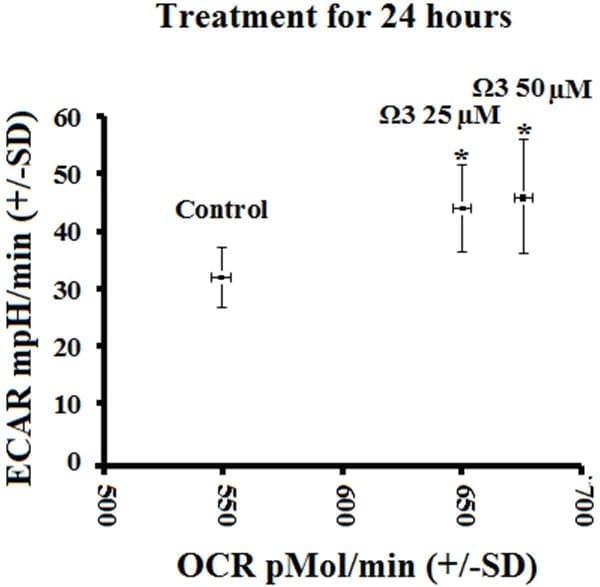
Conjugated Linoleic Acid: CLA
If you’re looking to reduce your body fat, the idea of purchasing CLA may have already crossed your mind. Before you go ahead and add this supplement to your basket, read this article to find out more about CLA and its many benefits and find out what it can do for you.

You'll find in this article:
What Is CLACLA BenefitsCLA for Weight Loss and Increased Metabolic RateEnhanced muscle growthLowers cholesterol and blood glucose levelsSupports the immune systemCLA Side EffectsSources of CLAWhen to Take CLA Tablets and How Much
What Is CLA – The Science
Conjugated linoleic acid (CLA) has been gaining a lot of attention within the fitness industry and is a growing popularity amongst gym-goers, bodybuilders, and individuals looking to burn fat. You may have already heard of CLA, but you might be wondering exactly what it is and how it’s connected to weight loss.
CLA belongs to the omega family of fatty acids. Specifically, CLA is a mixture of at least 28 positional and geometric isomers* of linoleic acid, which is an essential omega-6 polyunsaturated fatty acid. Essential fatty acids cannot be produced by the body alone and therefore must be consumed through the diet.
How Does CLA Work?
The “conjugated” part refers to the arrangement of single and double bonds in CLA’s structure, and how this affects electron behavior. It is this specific electron interactivity which is considered to facilitate some of the benefits of CLA.
There are two main isomers which are thought to influence the most physiological effects (4):
Cis-9, trans-11-CLA (we will call t11) andtrans-10, Cis-12-CLA (we will call t10).
Interestingly, when acting alone, both of these isomers have an effect on the body which may influence body composition. t10 has been shown to be responsible for reduction in body fat gains (5), whilst t11 actually enhances feeding efficiency and growth (4). This means that they work to reduce fat and increase muscle mass. When they work together, both t10 and t11 are working in juxtaposition which has been shown to be effective in inhibiting breast cancer cells in rodents (6-8).
CLA has a series of functions within the body — its consumption is required for the normal food and energy metabolism that keeps us healthy. CLA can be found in common foods that come from animal products including meat and dairy. However, a growing interest in CLA supplements has recently emerged due to its weight loss and other health benefits. Most CLA supplements will be composed of these two isomer forms outlined above.
* An isomer is a group of molecules which share the same chemical formula (number and type of atoms), but are arranged into a different structure.

CLA Benefits
1. CLA for Weight Loss and Increased Metabolic Rate
The main reason that CLA is so popular is its connection to weight. We break down some of the mechanisms that explain how CLA may do this.
Reducing Body FatThe documented benefit of CLA in reducing body fat is explained by two main theories of action:
1) Reducing lipid uptake into adipocytes (fat cells) by inhibition of a specific enzyme called lipoprotein lipase (15-16). This mechanism is facilitated predominantly by the t10 isomer of CLA (16).
2) Reducing the accumulation of triacylglycerol in fat cells. Triacylglycerol is a blood lipid which enables transfer of glucose and fat from the liver.
In animal model studies, fat loss in rats that were fed a CLA supplement was found to be due to a reduction in size of fat cells by 15 to 29% compared to controls (20). This supports the first theory of how CLA can contribute to fat loss. A separate study demonstrated that CLA was found to reduce accumulation of triacylglycerol in fat cells, supporting the second theory of action (17). This benefit was also seen in cultures of human cells with the t10 isomer (18-19). These results indicate the CLA can reduce both synthesis and storage of fat cells, and as such reducing levels of body fat in both animal and human laboratory models.

Increasing Metabolism
It has been proposed that consuming CLA can help increase weight loss and decrease body fat through a series of biochemical reactions that act to increase the basal metabolic rate. Our basal metabolic rate (BMR) is the minimum amount of energy the body requires to function, whereby an increase in BMR means that more calories are burned for the body to function.
CLA is involved in a series of metabolic reactions that regulate fat tissue in the body. It is thought that through increasing BMR, CLA acts to alter the body fat to muscle ratio and increase energy expenditure.
STUDY 1: Animal Models
Initially, the effect of CLA was extensively studied within several different animal models. For example, in a study by West et al. (1998), the effect of CLA on body fat and energy metabolism in mice was examined over 6 weeks. In this study, half of the mice were given CLA whilst the other half weren't. After 6 weeks, the study revealed that CLA significantly reduced energy intake, growth rate, and body fat mass, independent of diet composition. These findings demonstrate that CLA is likely to increase metabolic rate in mice, causing a reduction in body fat.
STUDY 2: Human Models
More recently, human studies have revealed the benefits of CLA supplementation. For example, a meta-analysis of 18 studies by Whigham et al. (2007), concluded that supplementing with 3.2g of CLA a day can act as an effective supplement for reducing fat mass.
STUDY 3: Overweight
The effect of CLA on weight loss has been seen particularly amongst overweight individuals. A study investigating long-term supplementation over 2 years in 134 people revealed that CLA can decrease body fat mass in overweight people and may actually help to maintain initial reductions in weight in the long run.
STUDY 4: Healthy & Exercising
The effect of CLA in healthy exercising individuals was also analyzed by Wadstein et al., (2001) in a double-blind randomized trial, including healthy participants with a normal BMI and weight. The study showed that CLA may help to reduce body fat mass in healthy exercising individuals, which may make CLA a good supplement for those who regularly exercise too.
Sometimes fat loss doesn’t mean weight loss.Interestingly, some studies in both animal (15) and human (22-23) models, changes in body fat do not directly mean weight loss, even when body fat is reduced up to 60% (15). In fact, body fat loss has been seen alongside increases in protein synthesis (24). Therefore, if the reason for taking CLA supplements is to lose weight for competitive sport (e.g. for a weight class in combat sports), it should not be a go-to remedy.
Instead, it seems more appropriate to consume CLA if your aim is more aesthetic — for example, if bodybuilding, and body fat loss is your goal alongside maintenance of lean body mass (independent of weight loss). This is obviously more apparent when consumed in combination with physical activity (17).
STUDY 5: Combinations of Supplements
Recently a study examining 37 recreationally trained females showed that when consumed alongside a thermogenic, a protein gel, and a multi-vitamin supplement, significant improvements were seen in a number of physical outcomes (25). Assessment of fat percentage via DEXA scan and skin fold measurements showed approximately 3% changes in body fat percentage, and skinfold thickness in 5 areas of the body (chest, waist, hip, shoulder blade and triceps). Incidentally, this study also demonstrated that the combination of supplements used also led to an approximate 3kg reduction in body weight.

Figure 1: Relative metabolic rates represented by oxygen consumption (OCR) for two different concentrations of combination omega-3 treatments. Taken from Vaughan et al., (2012).
Vaughan et al. (2012) investigated whether CLA or omega 3 fatty acids actually enhance metabolism by increasing the mode of action of the mitochondrial skeletal muscle cells. The team quantified the metabolic rates by measuring the degree of extracellular acidification and oxygen consumption rates.
The results were incredibly interesting — omega-3 appeared to actually invoke the behavior of genes that activate metabolism. Besides this, there was an increase in the consumption of oxygen, the glycolytic capacity, and the overall metabolic rate. A similar effect was observed by cells treated with CLA.
It would seem that more recent studies are getting to grips with the underlying mode of action of a number of frequently used nutritional supplements. Now we are finally starting to understand the gene activating properties and the cascade of events that take place after ingestion. There is certainly research supporting CLA and omega-3 not only as a therapeutic supplement, but also as a metabolic accelerant and weight loss aid.

2. Enhanced Muscle Growth
Despite a decrease in body fat percentage, an overall decrease in weight is often not observed. This is because CLA has been shown to effectively increase muscle to fat ratio and act to enhance the growth of lean muscle mass. As muscles are metabolically active, an increase in muscle mass means the body burns more calories at rest. This means that the more muscle you have from working out, the more energy you will need when at rest too.
3. Lowers Cholesterol and Blood Glucose Levels
There are also several other health benefits associated with CLA supplementation. For example, CLA has been shown to help reduce blood pressure, insulin sensitivity and blood glucose levels, reducing risk of atherosclerosis and cardiovascular disease. For example, Kritchevsky et al., (1994) found that supplementation with 0.5g per day of CLA in rabbits caused a significant reduction in both LDL and total cholesterol, and an examination of the rabbit’s heart showed lower levels of atherosclerosis when compared to rabbits who did not receive CLA treatment.
Animal studies in obese and diabetic rats suggest a negative effect of consuming CLA for those with diabetes, due to reductions in the level of blood sugar and insulin concentration. A study involving 16 young (mean age 21 years old) and sedentary participants aimed to measure the effect of CLA on insulin sensitivity in humans (14).
After an 8 week period of CLA supplementation (4g per day) insulin sensitivity index increased, and fasting insulin levels reduced, compared to a placebo supplement which showed no change. These results indicate that the supplement showed an improvement in the participants’ responses to an oral glucose tolerance test and reduced insulin resistance (increases insulin sensitivity).
It would mean you need fewer carbs to be consumed to increase blood sugar levels, facilitate insulin release and subsequently transfer glucose to your cells for energy metabolism. The more efficient this process is; the less chance carbs will be stored as fat.

4. Supports the Immune System
When dieting and exercising regularly, the body can become run down and become more susceptible to illnesses. However, supplementing with CLA may help to boost the immune system. In several studies, CLA has been shown to increase immune system response and may also act to prevent catabolic (tissue breakdown) effects of the immune system during times of illness.
A group of 71 healthy males were provided different supplement forms of CLA in a double blind, randomized controlled trial (12). Each group was provided with a supplement in soft gel form of CLA in three different ratios of the t11 and t10 isomers. The participants were also then given a hepatitis B vaccination and their immune system response was measured.
In the group who were provided a ratio of CLA isomers which was 50:50, an increase in immune response in the way of twice as many protective anti-bodies was seen. This suggests this preparation of CLA (50% t11 and 50% t10) may assist immune system response to illness, or may prevent against the negative effects of overtraining.
Further Studies on CLA Fat Burning
Another benefit found is that, in an animal model, a CLA supplemented diet increased oxygen consumption and energy expenditure, leading to greater fat burning capacity in the skeletal muscle tissue (15, 21). This indicates that CLA can potentially not only reduce body fat; but then also assists removing fatty deposits in our muscles.

CLA Side Effects
To date, there have been no harmful reported side effects of CLA supplementation. In extremely rare cases, supplementation with conjugated linoleic acid may cause nausea or an upset stomach however these effects are likely to be diminished when CLA is consumed with meals.
As with any supplement consumed for health reasons, all possible ventures to assess the risk of toxicity need to be evaluated. In the case of CLA, the overarching evidence supports that adverse effects have not been observed (17, 28) and that CLA supplements are non-toxic (29).
Concerns regarding the influence of CLA on insulin sensitivity are unsubstantiated (30-32); as are suggestions that CLA may enhance inflammatory aspects of cardiovascular disease (33).
Sources of CLA
CLA can be found in a number of commonly consumed foods, in particular animal products including meat and dairy (non-skimmed) products. More specifically, it is found in the meat from ruminant animals (e.g. animals such as cows and lamb that absorb nutrients in a specialized stomach by fermenting plant based food, such as grass).
In order to achieve all the benefits of CLA, the amount consumed through diet alone isn’t always enough. CLA tablets and capsules can be added to your diet plan and training regime. These also benefit vegetarians who do not consume their CLA through meat sources.

| Food | mg of CLA per gram of fat |
|
Fresh Ground Beef Lamb Chicken Pork Cows Milk Cottage Cheese Cheddar Cheese |
4.2 5.6 0.9 0.6 5.5 4.5 3.6 |
When to Take CLA Tablets and How Much
Doses used across studies are inconsistent varying from as low as 1.4g per day to 6.8g per day. Studies examining the correct dosage and safety of this supplement show that no additional effect is seen on body fat mass beyond doses of approximately 3.2 to 3.4g per day (26-27).
There are various dosages of CLA recommended. In order to help reduce body fat, between 1.8 to 7g of CLA is recommended daily. For optimum results, we recommend 2 soft gels to be taken with meals 1 to 3 times daily.

Take Home Message
Consuming CLA does not guarantee weight loss, however, when combined with a good diet and exercise regime, CLA may act to effectively reduce body fat while supporting the growth of lean muscle mass. You can consume CLA though several dietary sources, however, if you’re unsure about your CLA intake or if you’re exercising intensely, a CLA supplement may help aid your fat loss goals.
If your training objectives are based around sustaining lean muscle mass and shedding body fat then CLA may be the supplement for you. A course of CLA should gain best results alongside a suitably intense training regime to shred unwanted fat, whilst helping you maintain your hard earned muscle bulk. Whether via a powder addition to a pre-workout shake or via soft gels consumed at meal times, 3-4g per day is all you need to boost the potential to burn fat!
Our articles should be used for informational and educational purposes only and are not intended to be taken as medical advice. If you're concerned, consult a health professional before taking dietary supplements or introducing any major changes to your diet.
1.Lands WEM. (2005). Dietary Fat and Health: The Evidence and the Politics of Prevention: Careful Use of Dietary Fats Can Improve Life and Prevent Disease. Annals of the New York Academy of Sciences. 1055, 179–92.
2. Pariza MW, Ashoor SH, Chu FS, Lund DB. (1979). Effects of temperature and time on mutagen formation in pan-fried hamburger. Cancer Lett. 7, 63–9.
3. Ha YL, Grimm NK, Pariza MW. (1987). Anticarcinogens from fried ground beef: heat altered derivatives of linoleic acid. Carcinogenesis. 8, 1881–7.
4. Pariza MW, Park Y, Cook ME. (2001). The biologically-active isomers of conjugated linoleic acid. Prog Lipid Res. 40, 283–98.
5. Park Y, Storkson JM, Albright KJ, Liu W, Pariza MW. (1999). Evidence that the trans-10,cis-12 isomer of conjugated linoleic acid induces body composition changes in mice. Lipids. 34, 235–41.
6. Ip C, Dong Y, Ip MM, et al. (2002). Conjugated linoleic acid isomers and mammary cancer prevention. Nutr Cancer. 43, 52–8.
7. Masso-Welch PA, Zangani D, Ip C, et al. (2002). Inhibition of angiogenesis by the cancer chemopreventive agent conjugated linoleic acid. Cancer Res. 62, 4383–9.
8. Kemp MQ, Jeffy BD, Romagnolo DF. (2003). Conjugated linoleic acid inhibits cell proliferation through a p53-dependent mechanism: effects on the expression of G1-restriction points in breast and colon cancer cells. J Nutr. 133, 3670–7.
9. Mushtaq S, Mangiapane HE & Hunter KA. (2010). Estimation of cis-9, trans-11 conjugated linoleic acid content in UK foods and assessment of dietary intake in a cohort of healthy adults. Br J Nutr. 103, 9, 1366-74.
10. Ritzenthaler K, McGuire MK, Falen MK, et al. (1998). Estimation of dietary conjugated linoleic acid intake. FASEB J. 12, A527.
11. Fritsche J & Steinhart H (1998) Amounts of conjugated linoleic acid (CLA) in German foods and evaluation of daily intake. Z Lebensm Unters Forsch. 206, 77–82.
12. Albers, R., et al. (2003). Effects of cis-9, trans-11 and trans-10, cis-12 conjugated linoleic acid (CLA) isomers on immune function in healthy men. European journal of clinical nutrition. 57, 4, 595-603.
13. Belury, Martha A. (2002). Inhibition of carcinogenesis by conjugated linoleic acid: potential mechanisms of action. The Journal of nutrition. 132, 10, 2995-2998.
14. Eyjolfson V, Spriet LL & Dyck DJ. (2004). Conjugated linoleic acid improves insulin sensitivity in young, sedentary humans. Medicine and science in sports and exercise. 36, 5, 814-820.
15. Park Y, Albright KJ, Liu W, Storkson JM, Cook ME, Pariza MW. (1997). Effect of conjugated linoleic acid on body composition in mice. Lipids. 32, 853–8.
16. Park Y, Storkson JM, Albright KJ, Liu W, Pariza MW. (1999). Evidence that the trans-10,cis-12 isomer of conjugated linoleic acid induces body composition changes in mice. Lipids. 34, 235–41.
17. Pariza, Michael W. (2004). Perspective on the safety and effectiveness of conjugated linoleic acid. The American journal of clinical nutrition. 79, 6, 1132S-1136S.
18. Brown JM, Boysen MS, Jensen SS, et al. (2003). Isomer-specific regulation of metabolism and PPAR signaling by CLA in human preadipocytes. J Lipid Res. 44, 1287–300.
19. Brown JM, McIntosh MK. (2003). Conjugated linoleic acid in humans: regulation of adiposity and insulin sensitivity. J Nutr. 133, 3041–6.
20. Azain, Michael J., et al. (2000). Dietary conjugated linoleic acid reduces rat adipose tissue cell size rather than cell number. The Journal of nutrition. 130, 6, 1548-1554.
21. Nagao K, Wang YM, Inoue N, et al. (2003). The 10trans, 12cis isomer of conjugated linoleic acid promotes energy metabolism in OLETF rats. Nutrition. 19, 652–6.
22. Gaullier J-M, Breven G, Blankson H, Gudmondsen O. (2002). Clinical trial results support a preference for using CLA preparations enriched with two isomers rather than four isomers in human studies. Lipids. 37, 1019–25.
23. Gaullier, Jean-Michel, et al. (2004). Conjugated linoleic acid supplementation for 1 y reduces body fat mass in healthy overweight humans. The American journal of clinical nutrition 79, 6, 1118-1125.
24. DeLany, James P., et al. (1999). Conjugated linoleic acid rapidly reduces body fat content in mice without affecting energy intake. American Journal of Physiology-Regulatory, Integrative and Comparative Physiology276, 4, R1172-R1179.
25. Falcone, Paul H., et al. (2015). Subcutaneous and Segmental Fat Loss with and without Supportive Supplements in Conjunction with a Low-Calorie High Protein Diet in Healthy Women. PLoS One. 10, 4, :e0123854. doi: 10.1371/journal.pone.0123854. eCollection 2015.
26. Blankson, Henrietta, et al. (2000). Conjugated linoleic acid reduces body fat mass in overweight and obese humans. The Journal of Nutrition. 130, 12, 2943-2948.
27. Whigham LD, Watras AC & Schoeller DA. (2007). Efficacy of conjugated linoleic acid for reducing fat mass: a meta-analysis in humans. The American journal of clinical nutrition. 85, 5, 1203-1211.
28. Scimeca JA.(1998). Toxicological evaluation of dietary conjugated linoleic acid in male Fischer 344 rats. Food Chem Toxicol. 36, 391–5.
29. O’Hagan S, Menzel A. (2003). A subchronic 90-day oral rat toxicity study and in vitro genotoxicity studies with a conjugated linoleic acid product. Food Chem Toxicol. 41, 1749–60.
30. Noone EJ, Roche HM, Nugent AP, Gibney MJ. (2002). The effect of dietary supplementation using isomeric blends of conjugated linoleic acid on lipid metabolism in healthy human subjects. Br J Nutr.88, 243–51.
31. Gaullier J-M, Breven G, Blankson H, Gudmondsen O. (2002). Clinical trial results support a preference for using CLA preparations enriched with two isomers rather than four isomers in human studies. Lipids. 37, 1019–25.
32. Kamphuis MMJW, Lejeune MPGM, Saris WHM, Westerterp-Plantenga MS. (2003). The effect of conjugated linoleic acid supplementation after weight loss on body weight regain, body composition, and resting metabolic rate in overweight subjects. Int J Obesity. 27, 840–7.
33. Riserus U, Berglund L, Vessby B. (2001). Conjugated linoleic acid (CLA) reduced abdominal adipose tissue in obese middle-aged men with signs of the metabolic syndrome: a randomised controlled trial. Int J Obes Relat Metab Disord. 25, 1129–35.








